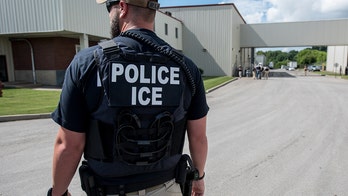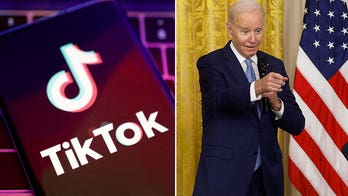WASHINGTON -- Federal Reserve officials cut their forecasts for growth this year and signaled they stood ready to take new steps to keep the recovery alive if the economy worsens.
A new document, released Wednesday, revealed a more cautious mood among the Fed policymakers in light of Europe's debt crisis, a volatile Wall Street, a stalled housing market and high unemployment.
With risks growing, Fed officials at their June 22-23 meeting saw the need to explore new options for bolstering the economy. That's a turnaround from earlier this year when they were moving to wind down crisis-era supports.
No new specific steps were disclosed or agreed upon at that time.
However, if the recovery were to deteriorate, Fed policymakers have options. They could revive programs to buy mortgage securities or government debt. They could lower the rates banks pay for emergency Fed loans. The Fed also could create a new program to spark more lending to businesses and consumers in a bid to lure them to ratchet up spending and grow the economy.
The economic and political hurdles for taking such action would be high, economists said.
"If the economy takes a nasty spill, then yes, it would take new policy action. But if we continue to see kind of mediocre, ho-hum growth, then that won't be enough for them to move," said Michael Feroli, an economist at JPMorgan Chase.
In the end, Fed Chairman Ben Bernanke and his colleagues agreed at the June meeting to hold a key interest rate at a record low near zero to help energize the economy. And they repeated a pledge to keep rates there for an "extended period."
At that time, Fed policymakers said they didn't think the slowing in the economy seen thus far warranted new stimulative actions besides those already in place, according to the minutes of the June meeting.
However, Fed officials said the central bank "would need to consider whether further policy stimulus might become appropriate if the outlook were to worsen appreciably," the document stated.
Fed officials concluded that the "economic outlook had softened somewhat." In fact, one-half of Fed officials saw "risks to growth as having moved to the downside."
Against this backdrop, Fed officials offered a slightly more downbeat view of the economy.
They now predict the economy will grow between 3 percent and 3.5 percent this year. That's down from forecast of 3.2 percent to 3.7 percent made in April.
There's little relief in sight for high unemployment. The jobless rate, now at 9.5 percent, would stay at that figure or in the best case fall to 9.2 percent this year. In the April forecast, the Fed had a slightly lower bottom number of 9.1 percent. Fed officials suggested it would take five or six years for the economy to get back to full health. Analysts say that would mean an unemployment rate closer to 5.5 percent to 6 percent range.
The weaker outlook chilled Wall Street's recent winning streak. The Dow Jones industrial average close up only 3.70 points to 10,366.72.
Bernanke has publicly downplayed the odds of the economy sliding back into a "double-dip" recession. He will provide lawmakers in Congress with a fresh economic outlook in back-to-back appearances on Capitol Hill next week.
Economists predict the Fed will keep the key interest rate at a record low well into next year and possibly into 2012. The Fed has leeway to hold it at a record low because inflation isn't a threat to the economy.
In fact, the minutes said that a few Fed officials worried about the risk of deflation. That's a widespread and destabilizing fall in prices of goods, prices of homes and stocks, and a drop in wages. The country's last serious bout with deflation was in the 1930s. Keeping interest rates at record lows would help combat any deflationary pressures.
If the U.S. recovery were to flash worrisome signs of a relapse, the Fed would likely take other steps to get it back on course. Its next regularly scheduled meeting is Aug. 10.
The Fed has left the door open to resume purchases of mortgage securities. It ended a $1.25 trillion mortgage-buying program in March, an initiative credited with driving down mortgage rates and bolstering the housing market earlier this year.
However, some question how much of an economic benefit would come from reviving the program now. Mortgages rates are already at record lows but that has failed to energize sales and home refinancings.
Feroli and other economists don't think resurrecting this program would do much. "Getting interest rates down a little bit more probably won't generate a whole lot of extra spending, " Feroli said. "There's too much uncertainty and caution out there, and lower interest rates probably won't overcome those fears."
A less likely move would be for the Fed to resume buying Treasury securities, a step it took during the crisis. Critics on Capitol Hill and elsewhere alleged the Fed was doing this to bankroll the federal government's record high deficits. The Fed said its government-debt buying program was aimed at lowering a range of rates to help revive the economy.
Both buying more government debt and buying more mortgage securities would expand the Fed's already swollen $2.3 trillion balance sheet. That's likely to cause concern among inflation hawks on Capitol Hill and inside the Fed.
"Things would have to get a lot worse before they agreed to this," said Paul Ashworth, senior U.S. economist at Capital Economics.
The Fed could cut its emergency lending rate to commercial banks, now at 0.75 percent. That rate was bumped up in February, when the Fed was started to raise the rate closer to normal. Still, the rate is considered low, and banks have scaled back on their use of the emergency Fed loans.
To foster the recovery, the Fed has left a key bank lending rate at between zero and 0.25 percent since December 2008. That has kept rates on certain credit cards, home equity loans, some adjustable-rate mortgages and other consumer loans at their lowest point in decades. But many Americans are cautious about making big-ticket purchases and businesses don't have much of an appetite to hire -- forces hobbling an energetic rebound.
There's some uneasiness within the Fed about its stimulative efforts.
Thomas Hoenig, president of the Federal Reserve Bank of Kansas City, at the June meeting dissented from the Fed's decision to keep rates at record lows for an "extended period." It was the fourth meeting in a row where he objected to that pledge.




